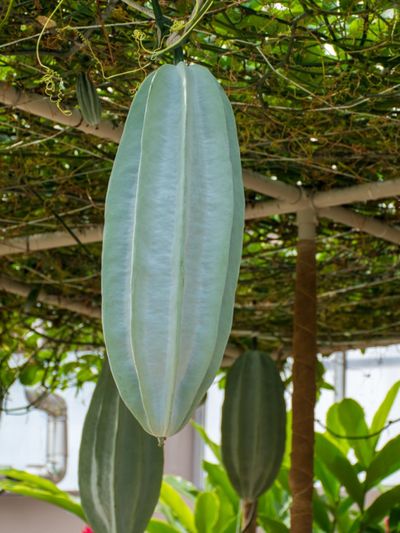What is a Fluted Pumpkin?
Nigerian fluted pumpkin (Telfairia occidentalis) is commonly called Ugu, and is widely cultivated throughout West Africa for both its seeds and young leaves. Ugu is an herbaceous perennial native to Southern parts of Africa. Like pumpkins, Nigerian fluted pumpkins creep along the ground and clamber up structures with the aid of tendrils. More commonly, growing fluted pumpkins occurs with the aid of a wooden structure.
Additional Info about Fluted Pumpkins
Nigerian fluted pumpkins have broad lobed leaves that are nutrient rich. They’re picked when young, and cooked into soups and stews. Plants grow to 50 feet (15m.) or longer. A dioecious flowering plant, Nigerian fluted pumpkins produce both male and female blooms on different plants. Blooms are produced in sets of five creamy white and red flowers. The resulting fruit is green when young progressing to yellow as it matures. The fruit is inedible but fluted pumpkin seeds are commonly used both in cooking and medicinally and are a valuable source of protein and fat. Each fruit contains up to 200 fluted pumpkin seeds. Seeds are also pressed for oil used in cooking. Medicinally, parts of the plant are used to treat anemia, seizures, malaria and cardiovascular disease.
Growing Fluted Pumpkin
Rapid growers, fluted pumpkin seeds can be grown in USDA zones 10-12. Drought tolerant, Nigerian fluted pumpkins can be grown in sandy, loamy, and even heavy clay soils that are acidic to neutral and well-draining. Tolerant of a variety of light conditions, Nigerian fluted pumpkins can be grown in shade, part shade or sun provided the soil is kept consistently moist.
